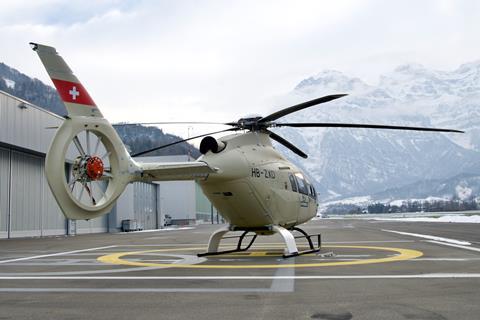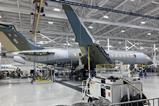Leonardo Helicopters is confident it will reach the 100-order milestone for the Kopter AW09 by end-2023 as it bids to secure the light-single’s first three years of production.
To date it has accumulated “north of 50” deposit-backed preliminary sales contracts and expects this to reach 60 “before summer”, says Emilio Dalmasso, senior vice-president of new products business development.

“We should be able to get something like 100 orders before the end of the year and possibly 200 before certification that is forecast for the second half of 2024,” he says.
At its planned initial final assembly rate, 100 aircraft would equate to three years of production, Dalmasso said, speaking at the Heli-Expo show in Atlanta on 7 March.
He anticipates service entry for an initial batch of three of the €3.7 million ($3.9 million) AW09s in late 2024, with deliveries accelerating the following year.
In the coming days Kopter intends to fly the fourth pre-serial aircraft (PS4) – the first to be powered by the Safran Helicopter Engines Arriel 2K turboshaft – having completed the necessary ground runs and obtained permits to fly, says Michele Riccobono, the manufacturer’s chief technology officer.
Kopter in January announced that it had dropped the AW09’s original Honeywell HTS900 powerplant in favour of the Safran unit – a project that took nine-months to complete, says Riccobono.
Redesign of the engine deck was required to integrate the longer Arriel engine, he says, alongside the production and assembly of new parts.
Aircraft PS4 incorporates additional enhancements validated on earlier prototypes, including new main rotor blades with a reshaped aerofoil and wider chord, additional skid gear fairings, a new fin and horizontal stabiliser, and a more aerodynamic upper fuselage cowling.
The modifications “really improved the stability and handling qualities”, Riccobono adds.
It will serve as the programme’s main certification test asset but will be joined later this year by aircraft PS5, which will later also serve as a customer demonstrator, says Dalmasso.
Meanwhile, Kopter continues to eye the potential for the addition of a hybrid-electric system on the AW09. In a first step this would use a battery pack and electric motor to provide sufficient power to enable a safe landing in case of failure of the thermal engine.
Subsequently, the battery and electric motor could be used to optimise performance of the conventional powerplant, says Riccobono.
Kopter’s target is to have an initial product on the market “within the end of this decade”, he says. Initial suppliers for the project are being recruited to enable the assembly of a ground-test rig at the manufacturer’s German subsidiary.































